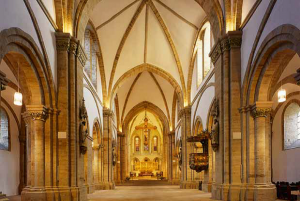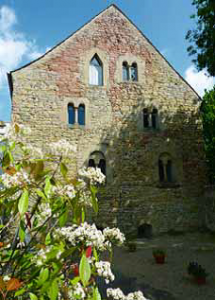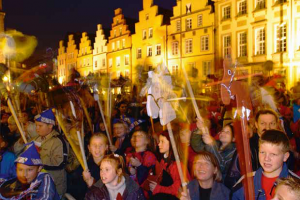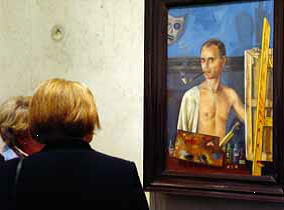1,200 years of eventful history

Around 780, Charlemagne, king of the franks, erected a stone church on the banks of the Hase River the nucleus of today’s Osnabrück . The city’s name is presumably a combination of the Low German words “Ossen” (ox) and “Brügge” (bridge). Around 780, Charlemagne, king of the Franks, erected a stone church on the banks of the Hase River the nucleus of today’s Osnabrück.
Some time before 803, the city became seat of the Prince-Bishopric of Osnabrück which likely makes the city the oldest bishopric in Saxony. As a hub of old trading routes and as the seat of a bishop, Osnabrück developed into a thriving center for commerce in the Middle Ages. In 1157, Emperor Frederick Barbarossa granted the city its fortification privileges.
Most of the towers that were part of the medieval fortification are still visible in the city. From 1412- 1669, Osnabrück was a member of the “Hanse” (Hanseatic League) as well as a member of the Westphalian Federation of Cities.
Magnificent town houses and other prestigious buildings bear witness to the power and wealth of the medieval merchants. Osnabrück became important during the negotiations for the Peace of Westphalia that took place here as well as in Münster between 1643-1648. The Peace of Westphalia, proclaimed on Oct. 1648, finally ended the Thirty Years’ War and changed the face of Europe.

While the Catholics used Münster as a venue, the Protestants resided in Osnabrück. As a result of this time Osnabrück was alternately ruled by Catholic and Protestant bishops until 1803. Osnabrück became widely known among literature lovers through the works of one of its own sons, Erich Maria Remarque (1898-1970). The Erich-Maria Remarque Peace Center dedicates an exhibition to his life and literary work.

Another of the city’s natives is Felix Nussbaum. The artist was born in 1904 in Osnabrück and died in 1944 in Auschwitz. The renowned architect Daniel Libeskind designed the Felix Nussbaum Museum as a special place for Nussbaum’s artistic work. The architecture of the building is intended as ”rooms against oblivion” and captivates visitors by its unusual interior design.
| City Tip: Guided city tour with the night watchman – with a beautiful view from the spire of St Mary‘s Church (3 h duration) |


